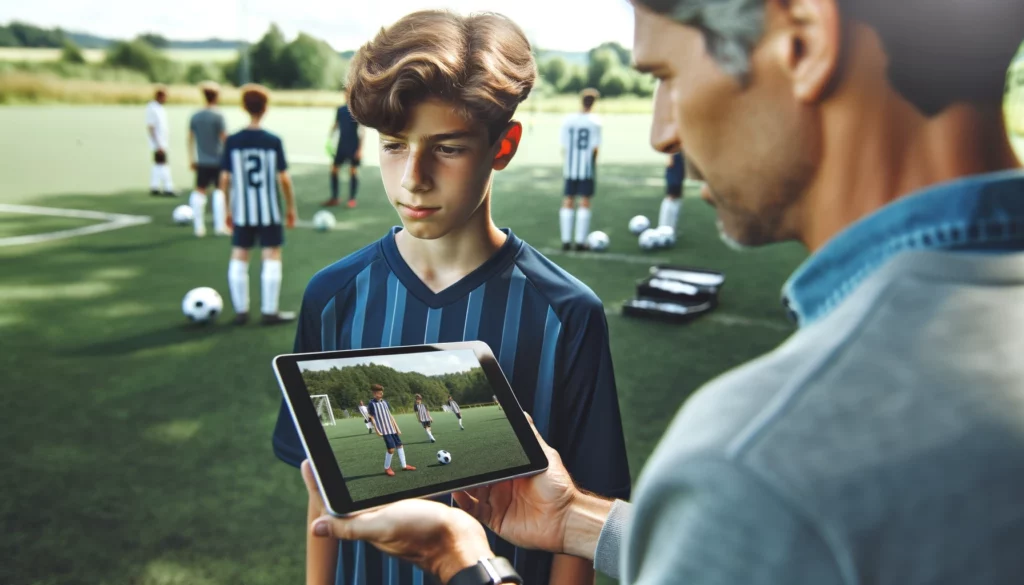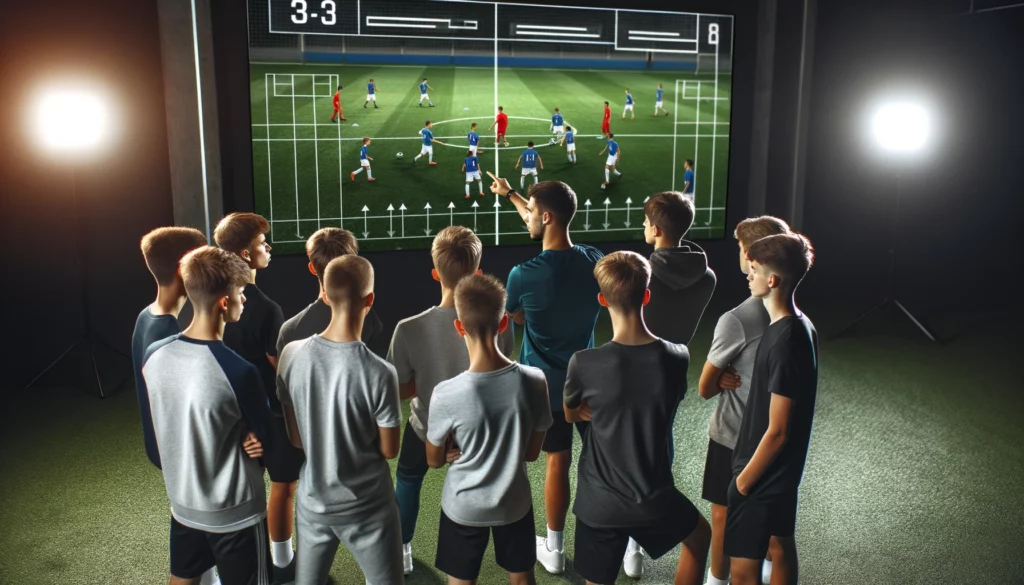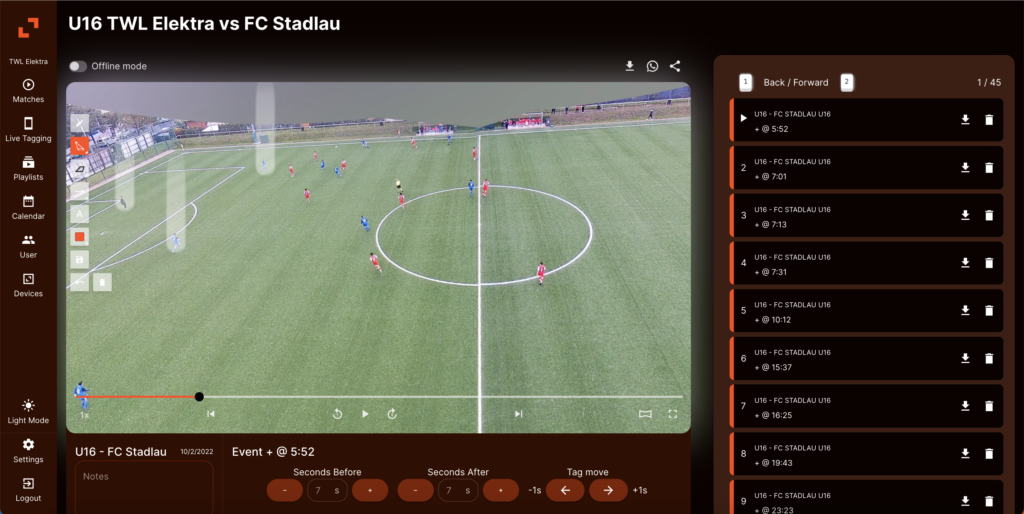
In youth football, the use of video analysis is becoming increasingly influential. Through offering a detailed and objective perspective on both individual player and team performance, football video analysis aids in identifying strengths and weaknesses that may not be visible during the heat of the game. It provides concrete visualisations that can significantly improve understanding and retention of key tactical and technical concepts.

Unlike traditional coaching methods that rely heavily on verbal feedback, video analysis provides objective, visual proof of what occurs on the field. This can help in reducing misunderstandings and ensuring that young players have a clear visual picture of their performance. The ability to pause, rewind, and rewatch specific plays allows for a thorough breakdown of actions, decisions, and their results. This is crucial for young players developing their understanding of both technical and tactical aspects of the game.
Video analysis encourages players to reflect more on their actions and decisions during a game. This reflective practice can lead to better self-awareness and personal growth, allowing players to understand their role and impact within the team more deeply. For youth players, this visual learning process supports reinforcing coaching points and helps them internalise strategies and techniques more effectively.
By watching game footage together, coaches and players can discuss specific moments and decisions, leading to more meaningful and productive conversations. This collaborative approach can support a stronger coach-player relationship and a more cohesive team environment which is key for youth development. For young athletes, seeing their performance helps them engage more actively and openly in discussions supporting them to understand and action feedback better.
The deeper insights gained from video analysis can be used to design personalised training and development programs that address the specific weaknesses and/or strengths of each player. This targeted approach can accelerate development and improve overall team performance. In youth football, this means identifying specific skill gaps and working on them with focused drills, enhancing the overall skill set and potential of young athletes.

The psychological impact of video analysis should not be underestimated. While it can be a powerful tool for improvement, it is crucial that coaches balance positive and constructive feedback to maintain player motivation and confidence. Coaches should be mindful of how they present video analysis sessions to ensure that young players in particular, feel supported and encouraged rather than criticised. Highlighting positive actions and improvements alongside areas for growth helps maintain a balanced perspective and fosters a growth mindset.
Video analysis is not only beneficial for improving current players but also serves as an invaluable tool for talent identification and scouting. By analysing footage of young prospects, scouts can make more informed and objective decisions based on a player's performance across a range of games.
This objective assessment can help in identifying potential stars who might otherwise be overlooked in traditional scouting processes.
Scouts can observe how players perform across different matches and conditions, assessing their consistency and versatility. Video analysis allows for the evaluation of a player’s adaptability to various game scenarios and their ability to maintain performance levels under different pressures, which is critical for youth players aspiring to progress to higher levels.
Video footage enables scouts to compare potential recruits side by side, offering a clear, visual comparison of their strengths and weaknesses. This method is particularly useful when making decisions about which players to invite for trials or sign to academies. For youth players, this means having more opportunities to showcase their abilities and be noticed by scouts.

The incorporation of advanced video analysis solutions, such as zone14, can further enhance these benefits. Unlike other solutions with the zone14 ONE camera all teams are able to make use of the camera, meaning the entire youth setup at the club can feel the benefits of video analysis.
The zone14 REPLAY platform offers the ability of tagging, analysing, and easy sharing video clips, making the analysis process more efficient and effective for youth player development. Furthermore the development of zone14 STATS also makes more data available to youth players than what was possible in the past.
Incorporating video analysis into youth football clubs and academies is essential for modern coaching. It provides a clear, objective, and detailed assessment of performance, improves the process of communication and reflection, and supports the identification and development of future talent. By making use of the latest technology, coaches can significantly increase the quality of training and development of young footballers. With the support of technology, the potential of the next generation of young footballers will reach greater heights than ever before.